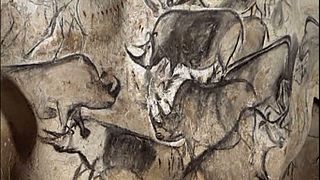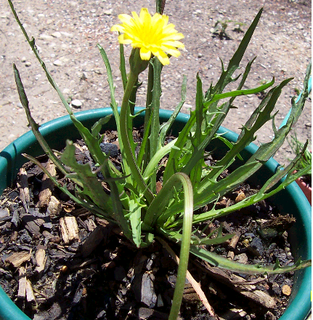Related Research Articles

This article describes the history of the Australian colony and state of Victoria.

The Wurundjeri are an Aboriginal Australian nation of the Woiwurrung language group, in the Kulin alliance. They occupied the Birrarung Valley before British colonisation of the area, around the present location of Melbourne.

The Kulin nation is an alliance of five Indigenous Australian tribes in south central Victoria, Australia. Their collective territory extends around Port Phillip and Western Port, up into the Great Dividing Range and the Loddon and Goulburn River valleys.

The Upper Paleolithic is the third and last subdivision of the Paleolithic or Old Stone Age. Very broadly, it dates to between 50,000 and 12,000 years ago, according to some theories coinciding with the appearance of behavioral modernity in early modern humans, until the advent of the Neolithic Revolution and agriculture.
Australian archaeology is a large sub-field in the discipline of archaeology. Archaeology in Australia takes three main forms, Aboriginal archaeology, historical archaeology and maritime archaeology. Bridging these sub-disciplines is the important concept of cultural heritage management which encompasses Aboriginal and Torres Strait Islander sites, historical sites and maritime sites.

Derrimut, was a headman or arweet of the Boonwurrung (Bunurong) people from the Melbourne area of Australia.

Microseris lanceolata is a perennial herb also known as murnong and yam daisy.
The Royal Historical Society of Victoria is a community organisation promoting the history of the state of Victoria, Australia. It functions to promote and research the history of that state after settlement, and as an umbrella organisation for more than 300 affiliated societies. It is operated by volunteers, and has a claimed membership of 1200.
Human prehistory is the period between the use of the first stone tools c. 3.3 million years ago by hominins and the invention of writing systems. The earliest writing systems appeared c. 5,300 years ago, but it took thousands of years for writing to be widely adopted, and it was not used in some human cultures until the 19th century or even until the present. The end of prehistory therefore came at very different dates in different places, and the term is less often used in discussing societies where prehistory ended relatively recently.
William "Bill" Culican was an Australian archaeologist and lecturer in biblical archaeology and pre-classical antiquity at the University of Melbourne.
Peter John Frazer Coutts was an Australian archaeologist who was first director of the Victoria Archaeological Survey (VAS), the precursor to the Heritage Branch of Aboriginal Affairs Victoria.
The Victorian state government established the Archaeological and Aboriginal Relics Office under the Chief Secretary's Department, following the enactment of the Archaeological and Aboriginal Relics Preservation Act 1972. One of the original aims of the Relics office was to compile a list of archaeological sites throughout the State, which still continues as the Victorian Aboriginal Heritage Register. Initially staff consisted of the Protector of Relics, the State Archaeologist, two Archaeologists, a Geologist, a Field Assistant and three Administrative staff.
Gary Presland is an Australian archaeologist and writer who studied history at La Trobe University 1973-76, and archaeology at the University of London, 1977-79. He was a staff member of the Victoria Archaeological Survey from 1983 to April 1988; his research interests are in the Aboriginal and natural history of Melbourne. One important contribution was the transcription and editing of the unpublished journals of George Augustus Robinson, Chief Protector of Aborigines in the Port Phillip District, 1839-1849. He was awarded the degree of Doctor of Philosophy at the University of Melbourne in 2005, for his reconstruction of the pre-European natural history of Melbourne.
The Archaeological Society of Victoria was formed in 1964 from the efforts of University of Melbourne academic William (Bill) Culican in response to the enthusiastic response to his archaeology lectures run through the CAE. In 1976 it combined with the Anthropological Society of Victoria to create the Archaeological and Anthropological Society of Victoria or AASV. Among its contribution to the archaeology discipline in Victoria, it undertook excavations at Dry Creek, Keilor in the early 1970s, to uncover evidence of Pleistocene Aboriginal occupation.
The Anthropological Society of Victoria was formed in 1934, in response to the efforts of gifted lecturer Frederic Wood Jones who attracted an enthusiastic non-academic audience to his public lectures in the 1930s.

Aboriginal Victorians, the Aboriginal Australians of Victoria, Australia, occupied the land for tens of thousands of years prior to European settlement. Aboriginal people have lived a semi-nomadic existence of fishing, hunting and gathering, and farming eels in Victoria for at least 40,000 years.
The Keilor archaeological site was among the first places to demonstrate the antiquity of Aboriginal occupation of Australia when a cranium, unearthed in 1940, was found to be nearly 15,000 years old. Subsequent investigations of Pleistocene alluvial terraces revealed hearths about 31,000 years BP, making Keilor one of the earliest sites of human habitation in Australia. Remains of megafauna suggest a possible association with Aboriginal hunting.

The Woiwurrung are indigenous descendants of the people of the Indigenous Australian nation of the Woiwurrung language group, in the Kulin alliance.
Sandor (Alexandor) Gallus was a Melbourne archaeologist, most famous for his investigations of Pleistocene Aboriginal occupation at Koonalda Cave in South Australia and the Dry Creek archaeological site in Keilor, Australia, which helped demonstrate the great antiquity of Aboriginal occupation of Australia.
The Artefact is a refereed journal published annually by the Archaeological and Anthropological Society of Victoria.
References
- ↑ History of the AASV
- ↑ Margaret Bullen, Australian Anthropological Society, Annual Conference 2007 - Transforming Economies, Changing States, http://www.aas.asn.au/conf07/sessions/sesabs01c.php%5B%5D
- ↑ Presland, Gary (1998) ‘A.S. Gallus and the Archaeological Society of Victoria.’ The Artefact 21:9-13
- ↑ Presland, Gary (2001) ‘Artefact of history: a history of The Artefact’ The Artefact 24:5-9